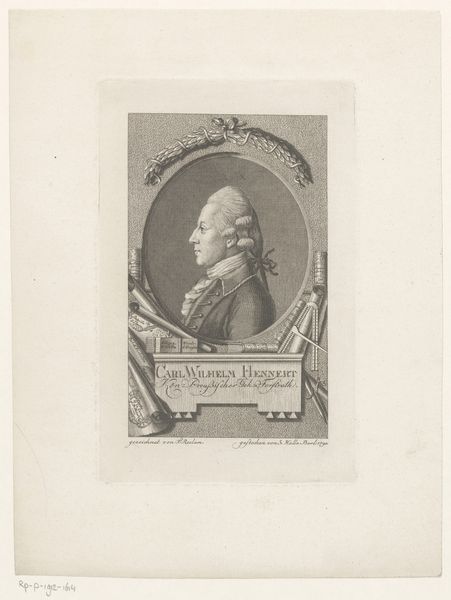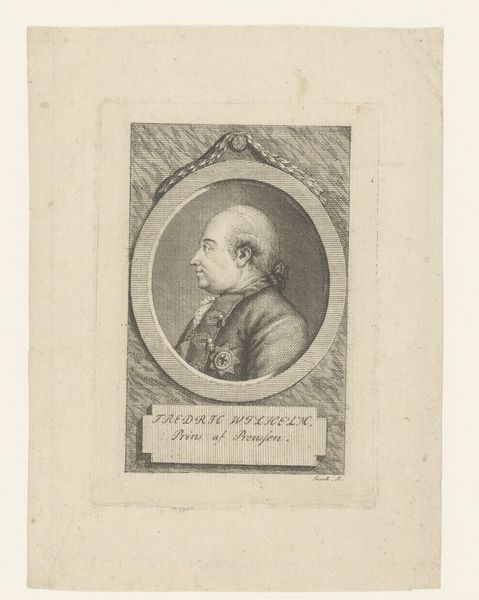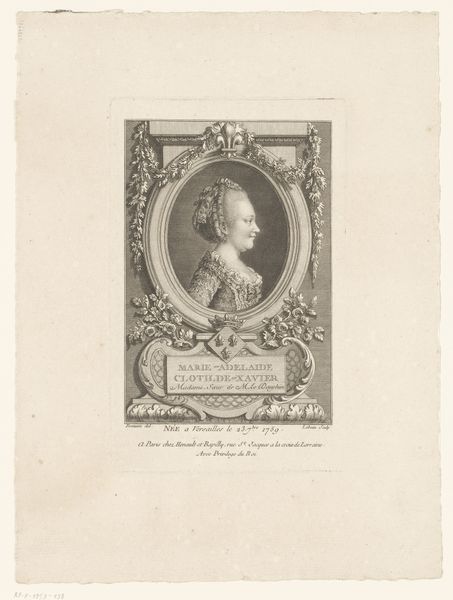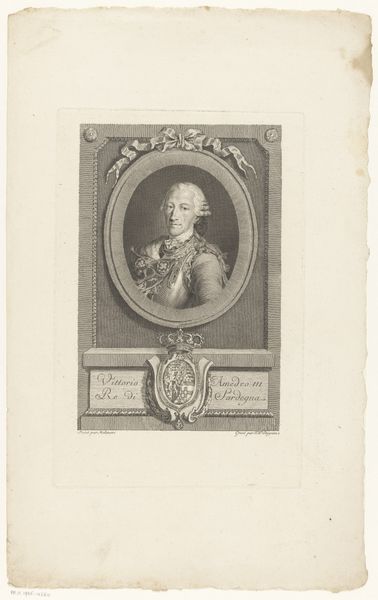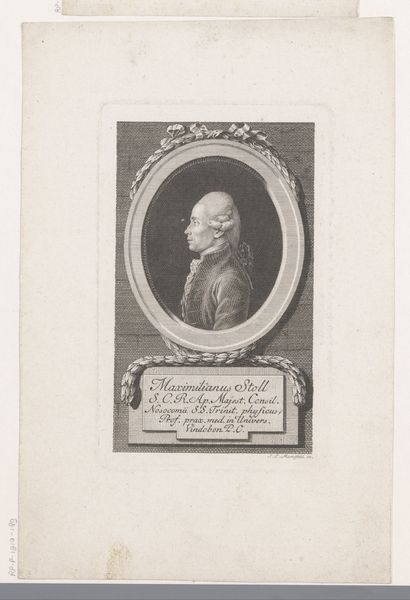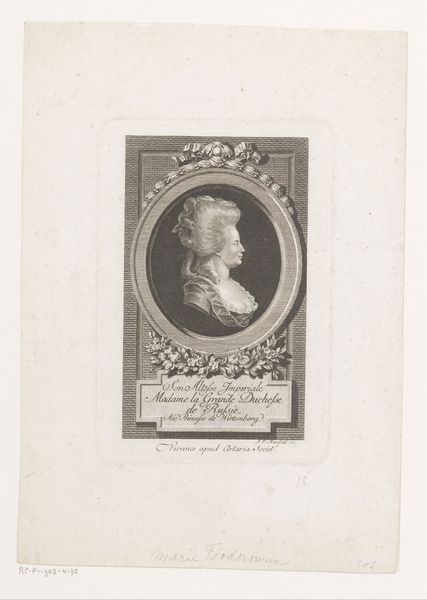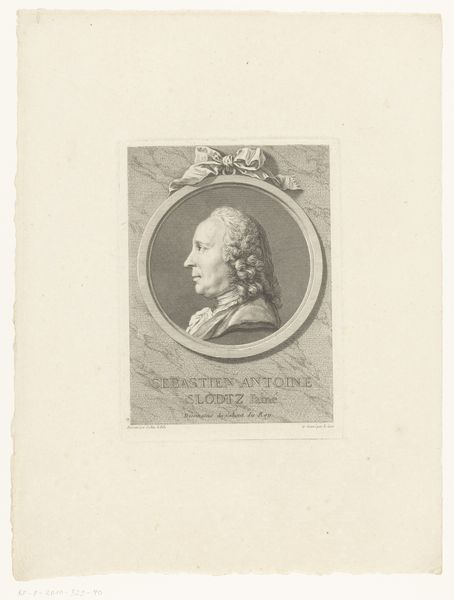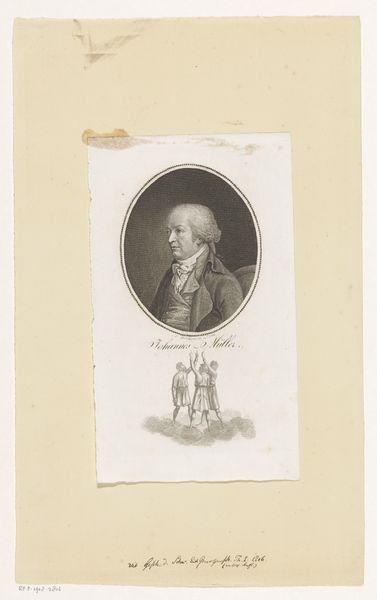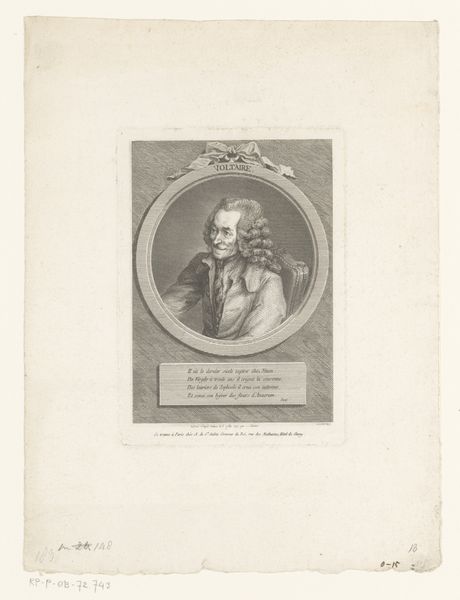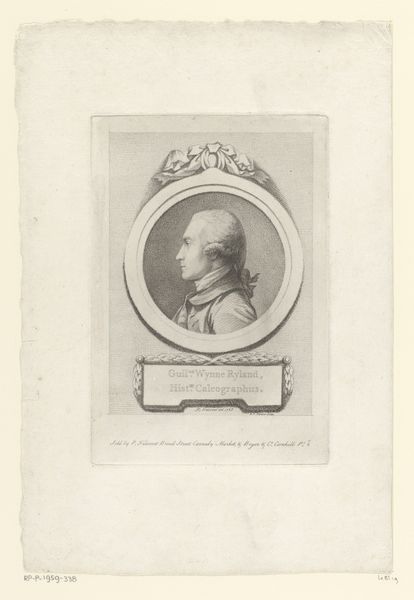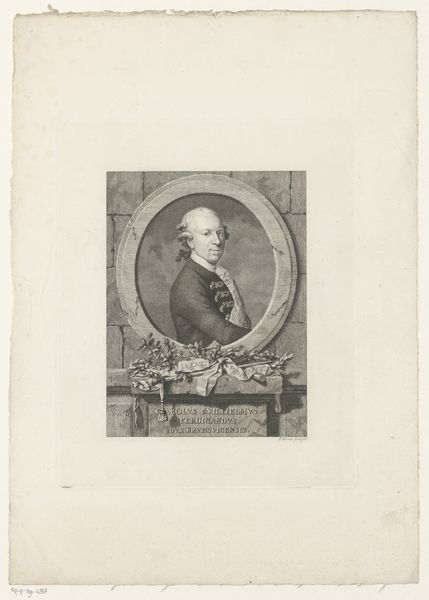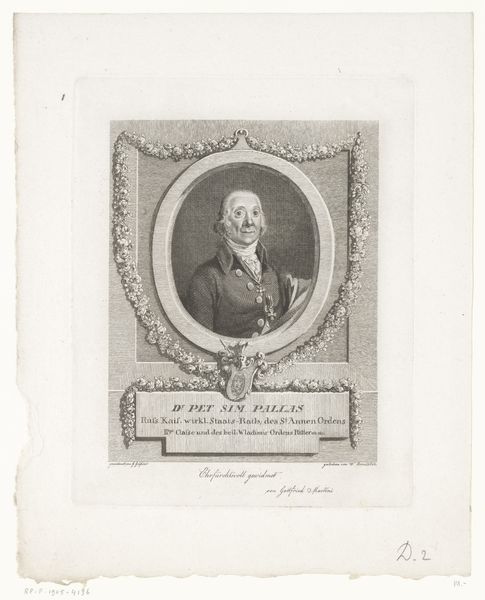
Dimensions: height 158 mm, width 102 mm
Copyright: Rijks Museum: Open Domain
This engraving of Carl Clemens von Pellegrini was made by Quirin Mark in the late 18th or early 19th century. The portrait bust is framed by symbols of Pellegrini's status and profession. Note the meticulous detail of the architectural tools and military emblems surrounding the central image. The compass and cannon barrel represent Pellegrini’s dual roles as an architect and military director. The compass, since antiquity, has symbolized precision and knowledge, seen in numerous depictions of geometricians, while the cannon, a tool of war, contrasts sharply. This juxtaposition embodies the duality inherent in progress—creation and destruction, order and chaos. Such visual pairings echo motifs found in earlier Renaissance emblems. In Andrea Alciato's *Emblemata*, for instance, contrasting images provoke contemplation of life’s paradoxes. Here, Mark seems to invite a similar reading, engaging our subconscious awareness of the conflicting forces that shape human achievement. Symbols possess a fascinating tendency to resurface, evolving in tandem with cultural shifts, yet retaining vestiges of their primordial essence.
Comments
No comments
Be the first to comment and join the conversation on the ultimate creative platform.
